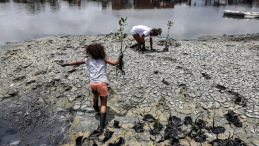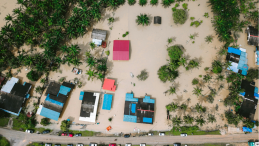How Drones and Lidar Help in Counting Mangrove Trees: A Practical Approach
Mangrove forests provide critical ecosystem services, including coastal protection, habitat for biodiversity, and carbon sequestration. Monitoring these ecosystems is essential for their conservation and sustainable management. This study was conducted on Pramuka Island, Indonesia, focusing on high-density Rhizophora stylosa vegetation. Data was collected using the DJI M300 RTK UAV equipped with the Zenmuse L1 LiDAR sensor, which generated a Canopy Height Model (CHM) and identified treetops. Various kernel sizes (3×3, 5×5, 9×9, 11×11, 21×21) and Local Maximum Filter (LMF) window sizes (0.5, 1, 3 meters) were applied to analyze mangrove tree density. The study found that the combination of a 3×3 kernel with a 0.5 meter window size yielded the best results, achieving the highest F-score and balancing precision and recall. However, despite the optimized settings, LiDAR still struggled to detect individual trees in dense mangrove stands, resulting in the underestimation of tree counts compared to field data. This highlights the challenges LiDAR faces in dense vegetation environments. The study emphasizes the need for optimized kernel and window size configurations for more accurate tree detection and calls for further development of LiDAR-based algorithms to improve detection in mangrove forests. Improved methodologies will enhance the effectiveness of mangrove forest conservation and management efforts.
Related content



